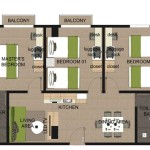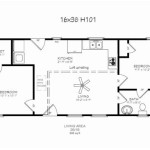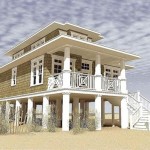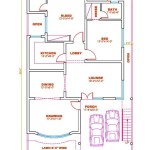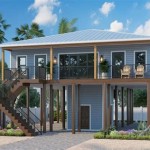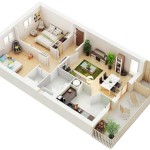How Much Does a House Plan Cost in Kenya? Understanding the Factors Influencing Price
Building a house in Kenya is a significant investment, and understanding the costs involved upfront is crucial for effective budgeting and project management. One of the initial expenses is acquiring a house plan, the blueprint that guides the entire construction process. The price of a house plan in Kenya is not fixed; it varies based on several factors, making it essential to understand these influences to make informed decisions.
This article explores the various elements that determine the cost of a house plan in Kenya, providing a comprehensive overview to help prospective homeowners navigate this aspect of their building project.
Factors Affecting the Cost of House Plans
Several key factors influence the price of house plans in Kenya. These encompass the size and complexity of the design, the type of professional involved, the level of customization required, and the location of the project.
Size and Complexity of the Design: The size of the house, measured in square meters or square feet, is a primary determinant of the plan's cost. Larger houses naturally require more detailed and extensive plans, increasing the time and effort required from the architect or designer. Complexity also plays a significant role. A simple, rectangular house with basic features will be cheaper to plan than a multi-story home with intricate architectural details, unconventional layouts, or specialized features like curved walls or complex roofing systems. The more complex the design, the more drafting, engineering calculations, and revisions are needed, thus raising the cost.
Type of Professional Involved: The qualifications and experience of the individual or firm creating the house plan significantly impact the price. Architects, who are licensed professionals with extensive training and expertise, typically charge more than draftspersons or building designers. Architects offer a broader range of services, including design conceptualization, structural integrity considerations, project management, and regulatory compliance. Draftspersons, on the other hand, primarily focus on translating ideas into technical drawings, often working under the supervision of an architect or engineer. While draftspersons are generally more affordable, they may not possess the expertise to handle complex designs or navigate intricate building codes and regulations. Choosing the right professional depends on the complexity of the project and the homeowner’s budget and requirements.
Level of Customization Required: The extent to which a house plan is customized directly affects its cost. Using a pre-designed or stock plan is generally the most cost-effective option. These plans are readily available and require minimal modifications. However, they may not perfectly suit the homeowner’s specific needs, preferences, or site conditions. Custom house plans, tailored to the homeowner's unique requirements and the specific characteristics of the building site, provide greater flexibility and personalization. This often involves extensive consultations, revisions, and detailed drawings, increasing the overall cost. The level of customization should be carefully considered, balancing personal preferences with budgetary constraints.
Location of the Project: The location of the project can indirectly influence the cost of the house plan. In urban areas, where demand for architectural services is higher and operating costs are greater, professionals may charge more than those in rural areas. Local building codes and regulations also vary across different regions, which can impact the complexity of the plans and the amount of time required to ensure compliance. Furthermore, the cost of living and prevailing wage rates in a particular area can affect the pricing of architectural and design services.
Cost Breakdown: A Detailed Look at Pricing Structures
Understanding the different pricing structures used by professionals in Kenya is essential for comparing quotes and accurately budgeting for house plans. There are several common methods of charging for these services:
Percentage of Construction Cost: Some architects and designers charge a percentage of the estimated total construction cost of the house. This percentage typically ranges from 5% to 15%, depending on the complexity of the project and the scope of services provided. This method is advantageous for both the homeowner and the professional, as the fee is directly tied to the scale of the project. However, it's crucial to obtain a realistic and accurate construction cost estimate to avoid unexpected expenses. It is equally important to have clarity on what services are included in the percentage fee.
Per Square Meter/Foot Rate: Another common pricing structure is charging a fixed rate per square meter or square foot of the house's floor area. This rate varies depending on the professional's experience, location, and the complexity of the design. The per-square-meter rate can range from KES 500 to KES 2,000 or more. This method provides a straightforward way to estimate the cost of the plan based on the size of the house. It is, however, crucial to determine what services are included in this rate (e.g., structural drawings, electrical layouts, plumbing diagrams, site plans, and revisions).
Lump Sum Fee: A lump sum fee involves agreeing on a fixed price for the entire house plan, regardless of the time or effort required. This method provides cost certainty and simplifies budgeting. However, it's critical to clearly define the scope of services covered by the lump sum fee to avoid misunderstandings or disputes later on. The homeowner and the professional should meticulously document all the deliverables, including the number of revisions, the level of detail in the drawings, and any additional services included.
Hourly Rate: Some professionals charge an hourly rate for their services, particularly for smaller projects or when the scope of work is difficult to define upfront. Hourly rates can range from KES 1,000 to KES 5,000 or more, depending on the professional's qualifications and experience. This method offers flexibility, but it can be difficult to estimate the total cost of the plan beforehand. It is imperative to maintain detailed records of the time spent on the project and to establish clear communication channels to track progress and manage costs effectively.
Additional Costs to Consider
Beyond the cost of the house plan itself, there are several additional expenses that homeowners should factor into their budget. These include structural engineering fees, statutory approvals, and site survey costs.
Structural Engineering Fees: For most house designs, especially multi-story buildings or those with complex structural elements, the services of a structural engineer are required. The structural engineer assesses the structural integrity of the design and ensures that it complies with building codes and safety standards. The fee for structural engineering services is typically a percentage of the construction cost or a lump sum fee. It is important to engage a qualified and experienced structural engineer to ensure the safety and durability of the building. The cost for services can vary depending on the scope of work.
Statutory Approval Fees: Before construction can commence, the house plan must be approved by the relevant local authorities, such as county councils or municipalities. These authorities review the plan to ensure that it complies with building codes, zoning regulations, and environmental standards. Approval fees vary depending on the location and the size of the house. These fees can vary depending on the complexity and size of the design. It is important to factor in this cost as part of the building budget.
Site Survey Costs: A site survey is a detailed assessment of the building site, which provides essential information for the design and construction of the house. A professional surveyor conducts the survey, generating a topographical map that shows the site's boundaries, contours, elevations, and any existing features, such as trees, utilities, or structures. The cost of a site survey depends on the size and complexity of the site, as well as the surveyor's fees. A site survey is crucial for accurate design and planning, helping to avoid potential problems or delays during construction.
By understanding these factors, prospective homeowners can better estimate the cost of a house plan in Kenya and make informed decisions when selecting a professional and planning their building project. Careful planning and budgeting can contribute significantly to a smooth and successful construction process.

House Designs In Kenya Plans

2 Bedroom House Plan In Kenya Muthurwa Com

Cost Breakdown For Building A 3 Bedroom House In Kenya

3 Bedroom House Plan A005 Plans Design Kenya

House Plans In Kenya The Budget 3 Bedroom Bungalow Plan David Chola Architect

New 4 Bedroom House Plans In Kenya 0799 69 13

House Plans In Kenya The Budget 3 Bedroom Bungalow Plan David Chola Architect

5 Excellent House Plans In Kenya For 2024

2 Bedroom House Plan A004 Plans Design Kenya

Simple 3 Bedroom House Plan For A Small Family In Kenya Muthurwa Com
Related Posts

